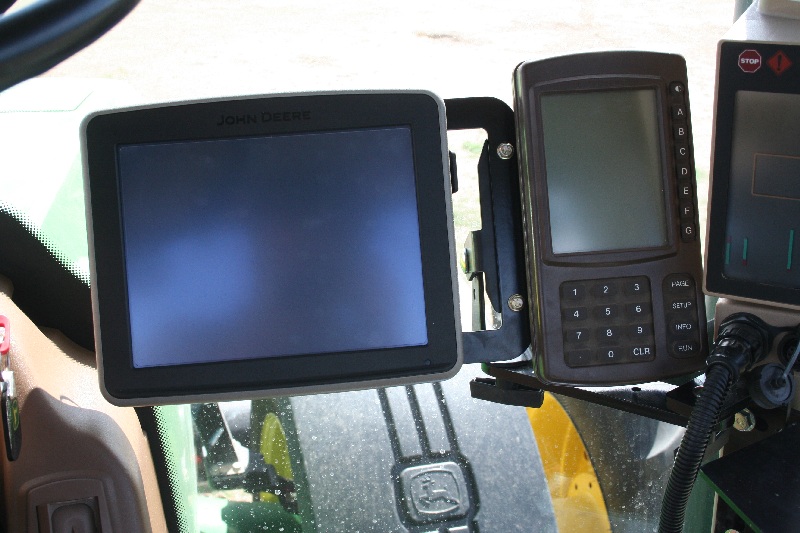
Last update: 04/10/2011
Since we plant corn as well as wheat, we have both a planter and a drill for our seeding equipment. Since we've grown a little, we upgraded to a new planter this year. It's a John Deere 1770NT with central commodity tanks. It's a 24 row with 30 inch spacing making it's width 60 feet wide. At the time of this writing the planter is not complete. We still have to finish building the hitch on the back of the planter so we can pull our 1910 air cart with it. We also need to install the fertilizer distribution manifolds, plumb the air hoses from the air cart to the manifolds and run hydraulic lines from the tractor back to the air cart.

We converted the single disk fertilzer openers over for use with dry fertilizer so that we could take advantage of the cost savings associated with dry starter fertilizer. The 350 bushel 1910 cart also gives us a lot of capacity for extended planting time between fertilizer fills.
For monitoring and controlling the planter we will use a John Deere 2630 monitor. The air cart is older this year and will require the use of a John Deere brownbox.

For drilling wheat we have a John Deere 1890 air drill with a 350 bushel 1910 air cart. Last fall we used a 42 foot model pictured below. Unfortunately it's too tall to fit in our shop. John Deere has a new model out this year that is 50 feet wide and folds differently so it will fit in our shop. We will use that model this fall so that we can take better care of the drill and reduce the hours that we put on the tractor.

The single disk style of the John Deere drill along with it's guage wheel being close to the point the seed is dropped helps us to drill through the high residue situations we consistantly encounter in our no-till environment. Additionally, there aren't many other drills that can match the down pressure capabilities of the 1890 which helps us maintain depth control in dry hard ground conditions.